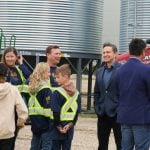A natural process called rheotaxis is used to measure sperm’s ability to swim upstream in the reproductive tract of cows
Testing the fertility and virility of breeding bulls can be expensive and time consuming. Scientists at Cornell University in New York have developed a quick test to check if bulls have the right stuff. The system is called the Rheolex method and it draws on the natural process called rheotaxis, in which the bull’s sperm […] Read moreStories by Freelance writer

Producers find sweet spot when catching calves
Developing a good relationship with all members of the herd can help ranchers minimize stress for calves and themselves
Ideally, sick calves are detected early and treated. A weak, listless calf is easy to catch but what about the ones with mild illness that can evade capture? Some ranchers think that a hard-to-catch calf isn’t sick enough to treat. However, a lethargic calf likely means intervention was required sooner. It can be challenging to […] Read more
Food choices are often personal
We all know someone who is extremely vocal about their food choices, even to the point of it causing friction with others. If not, you’ve never been on Twitter. Sustainable, organic, vegan: terms like these are increasingly morphing into exclusive tribes and dirty words rather than simple descriptive nouns. This is a problem, especially at […] Read more
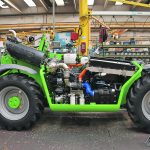
Green growth: Merlo expands its production operations
Italian agricultural and construction equipment manufacturer Merlo wants to produce 10,000 telehandlers and 25,000 attachments per year by 2025. With this goal, Merlo is undergoing significant expansion through its plant in Cuneo, where the company story first began. Merlo enjoys a 15 percent market share in Europe and a 10.5 percent market share worldwide while […] Read more

When the gardening bug never really goes away
Sheri Hathaway had been gardening since she was six, so the opportunity to get her hands dirty again couldn’t be passed up
From the time I was about six years old, I’ve been gardening. I liked to follow my mother down her rows of vegetables, asking questions as usual. She gave me a job pulling weeds, showing me first what constituted a weed and what precious vegetable I must leave to grow. “You can help me with […] Read more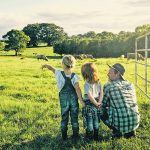
Mental health starts with the kids
Whitney Larson and her husband, Bart, have been practising no-till on their land to conserve moisture. Their farm in northwestern Kansas has experienced extreme drought for four consecutive years. Their irrigation pivots have been the only saving grace for some of their crops, including corn, sorghum and winter wheat, which they grow near Sharon Springs, […] Read more

Program pushes career in ag journalism
OLDS, Alta. — A project to encourage students to think about careers in agricultural journalism and communication was launched during a tour of Olds College in Olds. The goal of the Alberta Farm Writers Association Legacy Project is to raise awareness and educate students about careers in agricultural journalism and communication, said Janet Kanters, an […] Read more
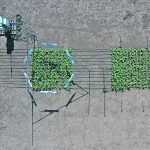
Research lets plants beat the heat
Genetic modifications create synthetic pathways that helps plants fix more CO2 and less of the more yield costly O2
As global warming increasingly threatens crop production, scientists at the University of Illinois and the United States Department of Agriculture, Agricultural Research Service, have found a way to safeguard plants against the dangers of heat. Researchers have improved the efficiency of a plant’s photorespiration through bypassing a photosynthetic shortcoming in a particular enzyme found in […] Read more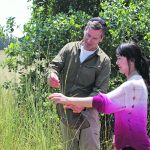
Wheat stem rust resistance found in wild grass
Plant scientists are focused on exploiting wild cereal relatives to find genetic traits that could be useful in domestic crops
Wheat stem rust was once one of the most devastating cereal diseases in Canada. First recorded in Western Canada in 1891, it became a major epidemic in 1916. Successful plant breeding for stem rust resistance has kept the fungus at bay in recent times, but outbreaks are flaring up in Australia, South Africa and Uganda […] Read more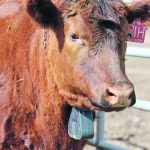
Device builds fences out of thin air
Researchers at Alberta’s Olds College study the effectiveness of building virtual fences by placing special collars on cattle
OLDS, Alta. — The time, effort and money put into creating temporary livestock fencing is one of the main reasons farmers don’t rotational graze, despite its proven benefits. But would more farmers rotational graze if setting the boundaries of a fence took two or three minutes and a click of a button from their cellphone, […] Read more


